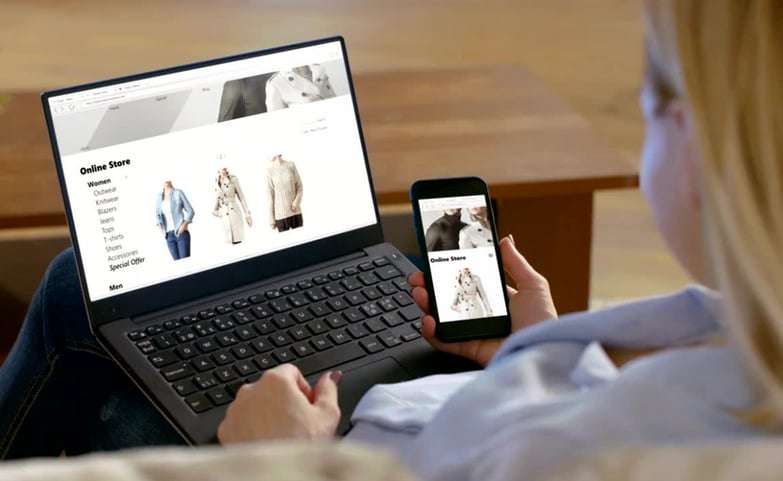Shoppable content connects imagery directly to products. This in turn allows consumers to buy instantly from the pictures, video and even text they’re viewing. An online retailer might use the most eye-catching photography and stylish videos to illustrate its products but, unless that content is shoppable, it becomes a missed opportunity to convert browsers into buyers.
In an age where speed and convenience rule, the importance of shoppable content as part of a content marketing strategy cannot be overstated, especially when it comes to mobile sales. In 2021 it was projected that 72.9% of all retail ecommerce will be generated via mobile, up from 58.9% in 2017. This is an environment where users spend much of their time on platforms such as Instagram, Pinterest, Snapchat and TikTok, scrolling through videos and images.
By linking those videos and pictures directly to the products they feature, it’s possible to cut out several steps in the purchase journey to make it more seamless. There’s a direct correlation between a shorter path to purchase and higher sales. If the content is sufficiently engaging, the consumer will be more likely to buy.
What does shoppable content look like?
It can take many forms. The beauty of shoppable content is that conversions and sales are easy to track. This in turn means brands and advertisers can try out different creative approaches, measuring the ROI of each.
Here are the most common types of content from which direct purchases can be made:
- Text: this is shoppable content at its most basic, where a link can be made from an article or blog post, enabling the reader to purchase the product mentioned.
- Images: high-quality photography has long been the traditional means of showing a product at its most appealing. It follows that it’s logical for brands to enable consumers to purchase directly from visual content – especially given the popularity of photo-sharing apps such as Instagram and Pinterest. Indeed, clicking on a shoppable Instagram post or a Buyable Pin on Pinterest will allow shoppers to buy the featured product.
- Video: a natural extension of shoppable photographic content, it’s possible for brands to tag the appropriate elements of online videos to enable viewers to directly shop the items they’re seeing on screen. When you consider that videos account for 80 percent of online consumer traffic, there seems little reason not to make them shoppable.
Of course, one of the benefits of all these types of content is their shareability. If it’s engaging enough, consumers will share content with their friends over social media, thereby providing more potential customers the chance to buy the products in question.
Furthermore, as that content comes from a friend or contact rather than being served by an advertiser, there’s a much higher chance that it will be trusted and a viewer will engage with it. In this way, user-generated content can magnify the effectiveness of shoppable content.
In January 2020, the global social media usage rate stood at 49 percent. By 2025, it is projected that 4.4bn people will use social media, up from 3.6bn in 2020. Sharing shoppable content puts a brand’s products in front of a global audience.
Shoppable content can be seen as the latest step in the ecommerce’s ongoing evolution, as brands and online retailers continue to search for ways to improve the customer experience. Combining visual and written content with the need to meet consumer demands for greater speed and convenience, forward-looking retailers can improve conversions and drive sales by making the purchase process as frictionless as possible.
What is the future of shoppable content?
Attractive, high-quality visual and written content has always been important in retail. But too often it’s been little more than window dressing. Ecommerce today requires something far more dynamic and compelling. Executed well, shoppable content can turn browsers into buyers within a couple of clicks, an effect that can be magnified when shoppers share details of purchases via social media.
That’s especially important at a time when the adoption of ecommerce has increased because of the pandemic. Longer term, it’s also important because of the way the retail sector is developing. The history of ecommerce teaches us that new forms of shoppable content will continue to emerge in the years ahead. Think of the recent boom in livestreaming, which began in China, but has been adopted by shoppers worldwide.
Investing in mastering shoppable content will help brands to make the most of these opportunities as they create and calibrate marketing strategies in the years ahead.




